-
FDA proposes rules to prevent terror attack on U.S. food supply
Food terrorism could have drastic economic effects. A DHS risk assessment discovered that should a pathogen like foot-and-mouth disease be introduced to Great Plains ranchers, total damages would exceed $50 billion, affecting U.S. beef exports and dramatically reducing consumer demand for beef products.In order to prevent or reduce the risk from a potential terror attack on the nation’s food supply, the FDA proposed new rules to the Food Safety Modernization Act (FSMA).
-
-
Heat waves threaten global food supply
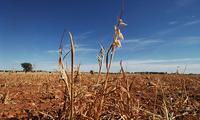
A new study has, for the first time, estimated the global effects of rising temperatures and elevated levels of carbon dioxide (CO2) on the production of maize, wheat, and soybean. Earlier studies have found that climate change is projected to reduce maize yields globally by the end of the century under a “business as usual” scenario for future emissions of greenhouse gases; however, this new study shows that the inclusion of the effects of heat waves, which have not been accounted for in previous modelling calculations, could double the losses of the crop.
-
-
International food trade can alleviate water scarcity
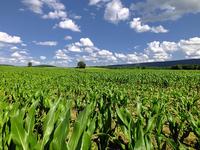
International trade of food crops led to freshwater savings worth $2.4 billion in 2005 and had a major impact on local water stress, a new study finds. Trading food involves the trade of virtually embedded water used for production, and the amount of that water depends heavily on the climatic conditions in the production region: It takes, for instance, 2,700 liters of water to produce one kilo of cereals in Morocco, while the same kilo produced in Germany uses up only 520 liters. The researchers found that it is not the amount of water used that counts most, but the origin of the water.
-
-
Climate change will reduce crop yields sooner than earlier thought
A new study shows that global warming of only 2°C will be detrimental to crops in temperate and tropical regions, with reduced yields from the 2030s onward. In the study, the researchers created a new data set by combining and comparing results from 1,700 published assessments of the response that climate change will have on the yields of rice, maize, and wheat.
-
-
Methane from Deepwater Horizon oil spill has entered food web

When millions of gallons of oil spilled into the Gulf of Mexico four years ago, so did large volumes of methane, or natural gas. Now, researchers have confirmed that methane-derived carbon has entered the Gulf’s food web through tiny organic particles floating in the Gulf. The presence of methane is not cause for alarm though, the researchers said. Overall, it has a benign impact on the food that makes it from the sea to people’s dinner tables.
-
-
Improving livestock diets to bolster food security, combat climate change
Livestock production is responsible for 12 percent of human-related greenhouse gas emissions, primarily coming from land use change and deforestation caused by expansion of agriculture, as well as methane released by the animals themselves, with a lesser amount coming from manure management and feed production. A new study shows that within the current systems, farmers would find it more profitable in coming years to expand livestock production in mixed systems — where livestock are fed on both grass as well as higher quality feed — rather than in pure grass-based systems. This development, would lead to a 23 percent reduction of emissions from land use change in the next two decades without any explicit climate mitigation policy.
-
-
Resistance shapes the discovery of new insecticides
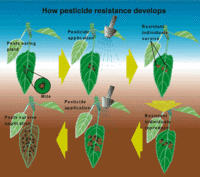
Recent news around the world has focused on the dangers of antibiotic resistance. – and the CDC estimates over two-million illnesses and 23,000 deaths occurred in 2013 as a result of antibiotic resistance in bacteria and fungus. But what of another type of resistance which can also have a huge impact on the population: that to insecticides? Livestock, for example, are affected by buffalo flies; farmers and customers are familiar with the total devastation caused by fruit flies; malaria mosquitoes and bed bugs are becoming more resistant to existing chemicals. Even our pets are affected: fleas and ticks are continuing their march, leading to a need for newer, often more expensive synthetic chemistries. The price of insecticide resistance — in the form of R&D costs for new compounds — is passed from chemical companies, to farmers, to consumers.
-
-
Long-term perspective on food security and climate shock
What role do pre-existing vulnerabilities play for people who experience a climate shock? Do these vulnerabilities amplify the effects of the climate shock or is effect negligible? Four Arizona State University archaeologists are looking into this as part of an international team examining how people can be most resilient to climate change when it comes to food security.
-
-
Research on bacteria-invading virus to help the agriculture community

Innovative work by two Florida State University scientists shows the structural and DNA breakdown of a bacteria-invading virus. This type of virus is called a bacteriophage, and the deconstruction of its DNA could be particularly useful for the agriculture community and seed companies. Important crop plants depend on biological nitrogen fixation by the bacteria which is preyed upon by this phage. Nitrogen fixation is the process by which abundant nitrogen gas in the atmosphere is converted to the scarce soil resources ammonia and nitrate.
-
-
Floods caused lead poisoning in U.K. cattle
Massive floods in England and Wales have forced thousands to evacuate their homes and destroyed railways and roads. Scientists say the U.K. floods of recent years carry yet another danger with them: lead poisoning. Silage cut from fields soon after they were inundated in the 2012 floods and then fed to cattle raised the lead levels in the animals, killing some of them. Blood samples taken from cattle showed that all of them had lead levels beyond the safe limit for human consumption. An autopsy carried out on one of the casualty animals found lead concentrations 79 times the safe level in its kidney. The contaminated material is thought to originate from historical metal mining in the area. Scientists say a number of river catchments throughout England and Wales face a similar risk.
-
-
Real-time livestock disease situational awareness
Veterinarians are the U.A. first responders for animal health, acting as the primary line of defense against animal disease outbreaks and are essential to the protection of our animal industries and economy. Researchers at the National Center for Foreign Animal and Zoonotic Disease Defense (FAZD Center) are working with veterinarians, federal and state animal health officials, and industry partners to improve real-time situational awareness of animal diseases.
-
-
More than 60 percent of California suffers drought conditions, with no relief in sight
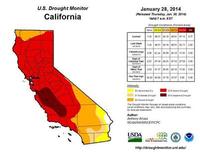
The entire west coast of the United States is changing color as the deepest drought in more than a century unfolds. According to the U.S. Department of Agriculture and NOAA, dry conditions have become extreme across more than 62 percent of California’s land area — and there is little relief in sight. “Up and down California, from Oregon to Mexico, it’s dry as a bone,” say a NAA scientist. “To make matters worse, the snowpack in the water-storing Sierras is less than 20 percent of normal for this time of the year.”
-
-
FDA says voluntary phasing out of antibiotics in livestock is working
A study by the Natural Resources Defense Council(NRDC) says that the U.S. Food and Drug Administration allowed eighteen animal drugs to remain on the market despite the agency’s discovery that the drugs posed a high risk of exposing humans to antibiotic-resistant bacteria through food supply. The NRDC criticizes the FDA’s voluntary guidelines for antibiotic phase-out, but observers note that beginning in 2001, the FDA began reviewing thirty approved antibiotic-based feed additives, and that only a few – fewer than the eighteen claimed by NRDC – are still in use, and they, too, will soon be relabeled and not allowed for use in livestock.
-
-
New biofuel sources does not require farmland
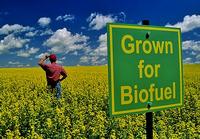
While the debate over using crops for fuel continues, scientists are now reporting a new, fast approach to develop biofuel in a way that does not require removing valuable farmland from the food production chain. Their work examines the fuel-producing potential of Streptomyces, a soil bacterium known for making antibiotics.
-
-
Faster way to spot bacteria-tainted food -- and prevent illness
The regular appearance of food poisoning in the news, including a recent event that led to the recall of more than 33,000 pounds of chicken, drives home the need for better bacterial detection long before meats and produce make it to the dinner table.
-
- All
- Regional
- Water
- Biometrics
- Borders/Immig
- Business
- Cybersecurity
- Detection
- Disasters
- Government
- Infrastructure
- International
- Public health
- Public Safety
- Communication interoperabillity
- Emergency services
- Emergency medical services
- Fire
- First response
- IEDs
- Law Enforcement
- Law Enforcement Technology
- Military technology
- Nonlethal weapons
- Nuclear weapons
- Personal protection equipment
- Police
- Notification /alert systems
- Situational awareness
- Weapons systems
- Sci-Tech
- Sector Reports
- Surveillance
- Transportation
Advertising & Marketing: advertise@newswirepubs.com
Editorial: editor@newswirepubs.com
General: info@newswirepubs.com
2010-2011 © News Wire Publications, LLC News Wire Publications, LLC
220 Old Country Road | Suite 200 | Mineola | New York | 11501
Permissions and Policies
Editorial: editor@newswirepubs.com
General: info@newswirepubs.com
2010-2011 © News Wire Publications, LLC News Wire Publications, LLC
220 Old Country Road | Suite 200 | Mineola | New York | 11501
Permissions and Policies
